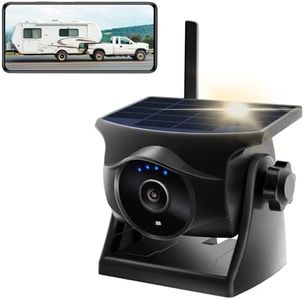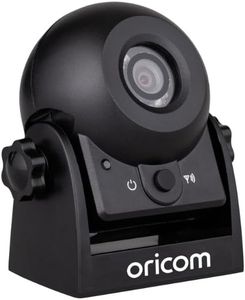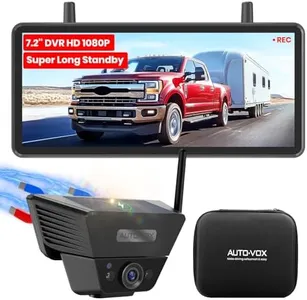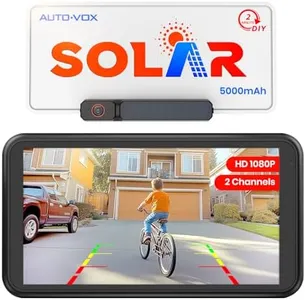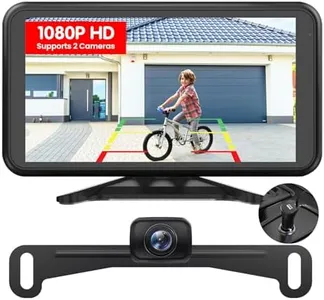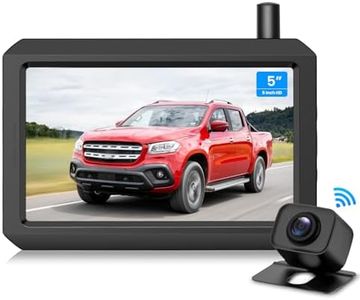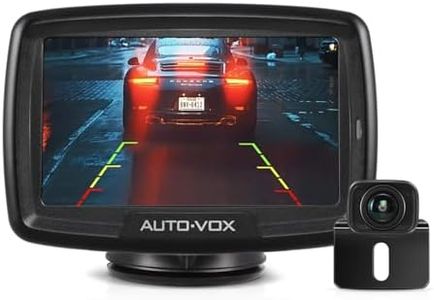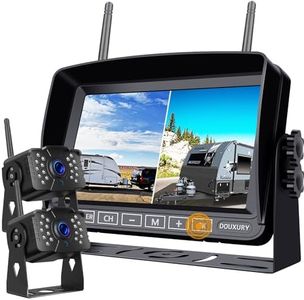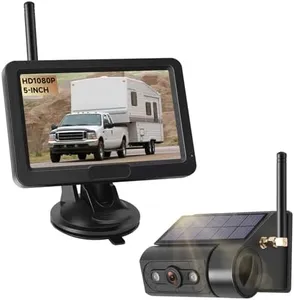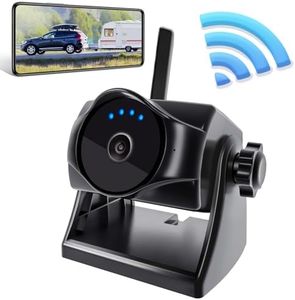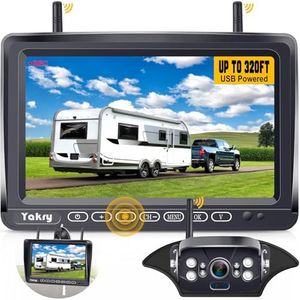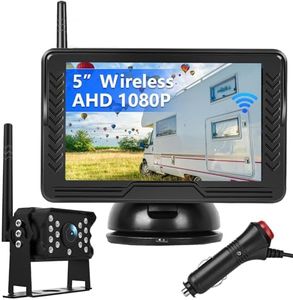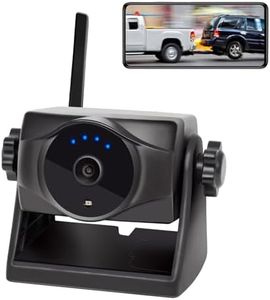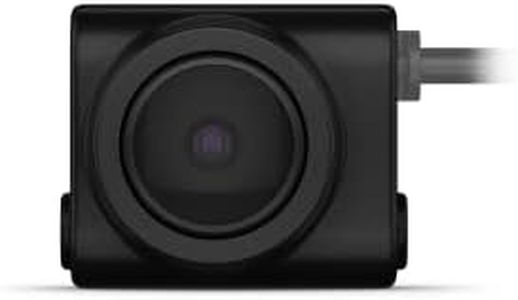We Use CookiesWe use cookies to enhance the security, performance,
functionality and for analytical and promotional activities. By continuing to browse this site you
are agreeing to our privacy policy
10 Best Wireless Backup Cameras
From leading brands and best sellers available on the web.Buying Guide for the Best Wireless Backup Cameras
Choosing the right wireless backup camera can make parking and reversing much easier and safer. When shopping for one, it’s important to understand what features matter most for your vehicle, parking environment, and personal preferences. Each car or truck owner’s needs differ: some want the simplest setup for basic parking help, while others need advanced features for large vehicles, night driving, or tough weather. Focusing on the key specifications will help you find a model that offers the visibility, reliability, and convenience you need.Image Quality (Resolution)Image quality refers to how clear and detailed the video feed from the camera appears on your display. This is important because a higher resolution will make it easier to spot objects, pedestrians, and obstacles when backing up. Cameras often range from standard definition (like 480p) to high definition (720p or 1080p). Lower resolutions might suffice for simple parking in well-lit, low-traffic areas, but if you want sharper visuals—especially for tight parking or dimly lit areas—a higher resolution is helpful. Choose the resolution that gives you enough clarity to feel confident when reversing, based on your driving environment and how much detail you need.
Field of View (Angle)The field of view describes how wide an area the camera can capture. A wider angle allows you to see more of what's behind and to the sides of your vehicle. Typical angles range from about 90° to 170°. A narrow view might be fine for small cars or straightforward parking spots, while a very wide angle is better for larger vehicles, busy areas, or when you need to spot cars or children approaching from the sides. Be aware, though, that extremely wide lenses can distort the image at the edges, which may take some getting used to. Pick a field of view that matches the size of your vehicle and how much side-to-side coverage you want when backing up.
Wireless Signal Range and StabilityWireless backup cameras communicate with the monitor over a radio signal. The strength and stability of this signal determine how reliably you get video without interruption. If your vehicle is long (like a truck, van, or RV), you need a camera and receiver with a stronger signal range; typical options might promise around 20 to 100 feet. Even with a smaller vehicle, thick metal or electronic interference can reduce range. When evaluating this spec, think about the size of your vehicle and whether you’ll encounter obstacles that might interfere with the signal. Reliable connection ensures safe and stress-free backing.
Night Vision CapabilityNight vision is the camera’s ability to show a clear image in low light or darkness, usually via infrared LEDs. This is crucial if you often park in unlit or dimly lit areas or drive at night. Some cameras offer basic night vision that makes shapes visible, while others provide higher-quality images. If you mainly use your car during daylight, this spec might be less important, but for those who drive or park after dark, choosing a camera with strong night vision performance can make a big difference in safety.
Display Compatibility and SizeThe camera's monitor displays what the camera sees. Some backup cameras come with a standalone screen, while others can connect to your vehicle's existing screen. Display sizes can range from compact (around 4 inches) to larger displays (7 inches or more). Think about where you want the display, whether it will block your view, and whether you need a standalone screen or integration with your vehicle’s system. The right choice depends on your dashboard space, how much detail you want to see while reversing, and whether you want a permanent or removable display.
Weather Resistance (Waterproof Rating)Since backup cameras are mounted outside your vehicle, they need protection from rain, dust, and temperature changes. The waterproof rating (like IP66 or IP68) tells you how well the camera stands up to the elements. If you live in a place with heavy rainfall, snow, or regularly wash your car, a higher waterproof rating is important. For those in milder climates or who park under cover, this may be less of a concern, but good weather resistance ensures your camera works reliably year-round.
Installation Type and EaseSome wireless backup cameras are designed for easy, do-it-yourself mounting with minimal tools and wiring, while others require more complex installation. If you prefer a hassle-free setup, look for models labeled as easy install, which might attach to your license plate or rear bumper. If you don’t mind some work (or plan to hire a professional), you can consider more permanent, hardwired options. Think about your comfort with car DIY projects and whether you want something you can install quickly or something more integrated for a cleaner look.
